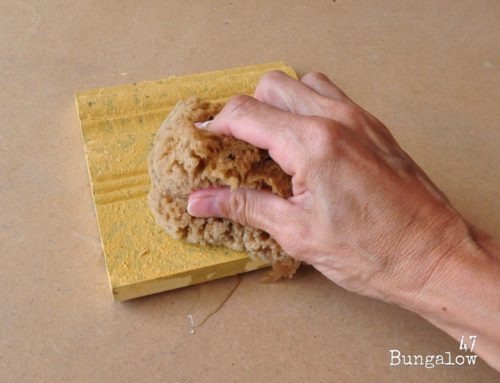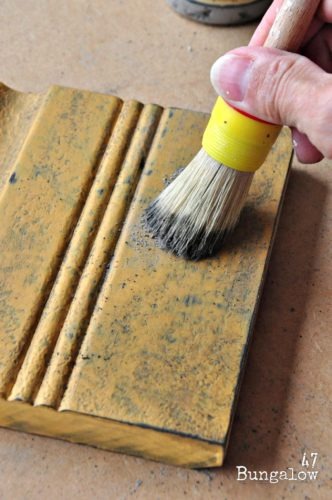Our favorite technique to share and teach is one that looks very difficult, and in the past, has been an advanced process for paint artists requiring many different products. But now, can be achieved with just one product line, American Paint Company chalk/clay/mineral paints!

- Paint (only one color)
- Clear Wax
- American Grit
- Your favorite paint brush
- Metal scraping spatula (trowel)
- Sea sponge
- Paper towel
- Water
- Something to paint



It’s more than just paint with chalk.








What do you think?
Now there is hope for those pieces that you thought were too damaged to be pretty again, just add some textured clay!
Post courtesy of Bungalow 47

I love the way that looks when it’s painted and it reminds me of a story my father once told me. As a young woman in the 70s I wore blue jeans and was the style large patches what were neither blue nor well stitched. He said that during the depression his mother sewed his worn and tore pants with the tiniest of stitches as not to be perceived as poor.
I think of the refinishing of furniture like that, time worn look yes but that look would have been perceived as poor by the owners and they might have wished for a fresh coat of paint, now we go to great lengths to make it look it like that.
That’s so true! It’s funny how trends have changed!
Will this technique work if you use polyurethane instead of wax? Thank you.
Using the American Grit would require using the wax. Although you can effectively use polyurethane over our natural chalk and clay paint, for this technique and look, wax would be best.
Hej vart kan man köpa denna product?l